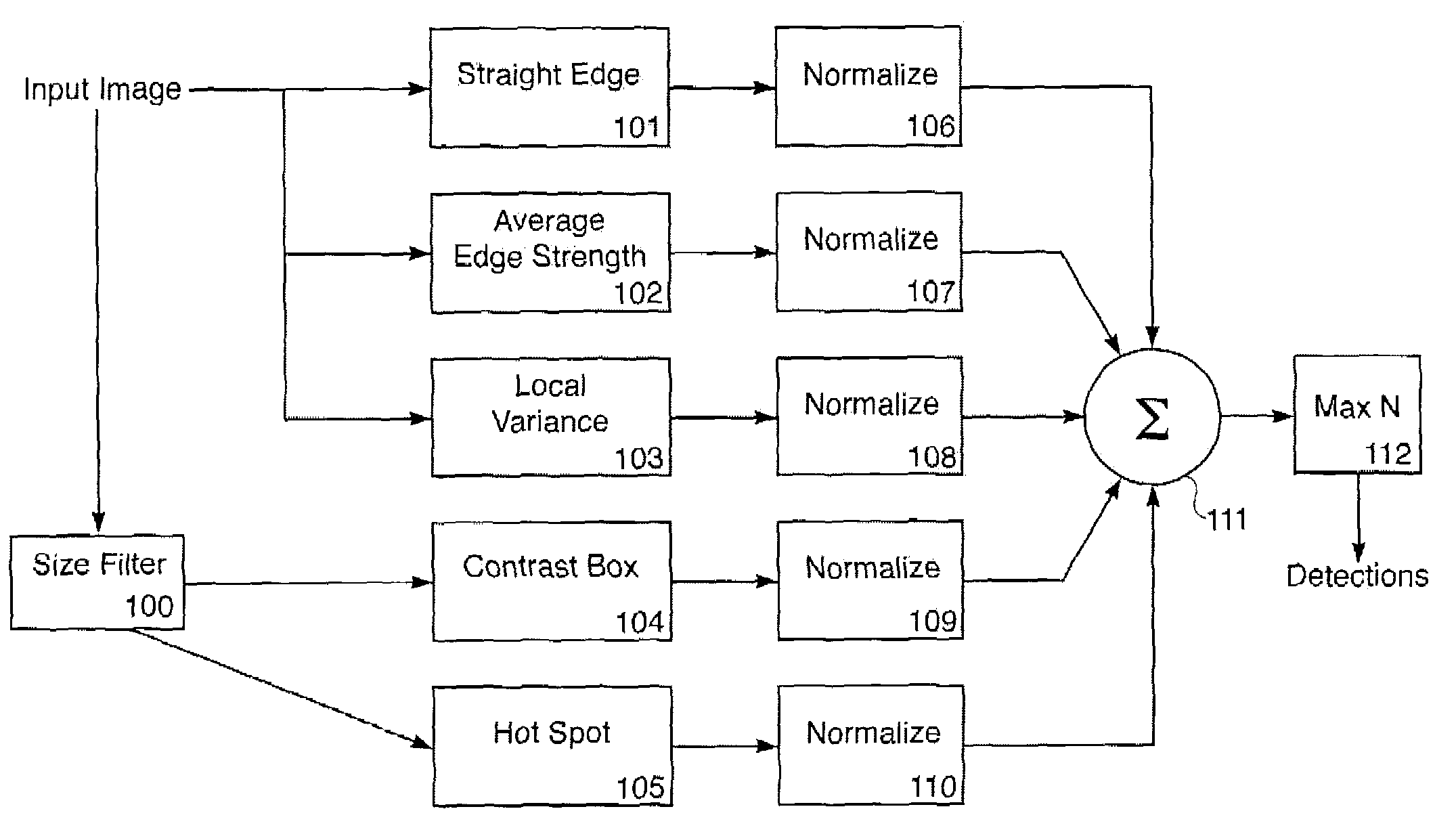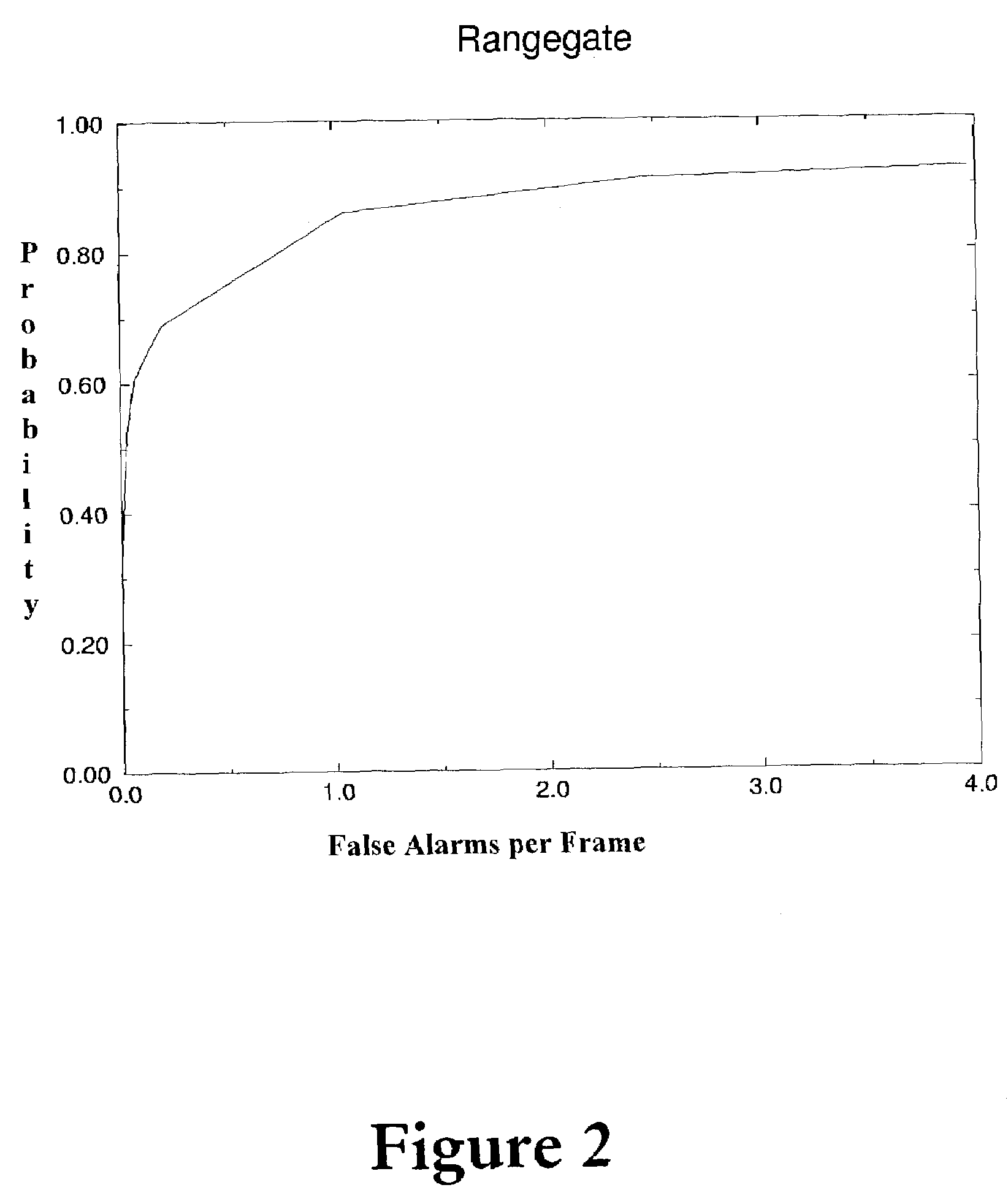Scale insensitive vehicle detection algorithm for flir imagery
- Summary
- Abstract
- Description
- Claims
- Application Information
AI Technical Summary
Benefits of technology
Problems solved by technology
Method used
Image
Examples
Embodiment Construction
[0034]Referring now to FIG. 1, A flowchart of the detection algorithm is illustrated. An input image (the image to be searched for targets such as vehicles and the like) is fed to a number of feature extractors 101-105. The feature extractors (Straight Edge 101, Average Edge Strength 102, Local Variance 103, Contrast Box 104, and Hot Spot 105) process the input image and output images of corresponding feature values, at each of several scales. Brighter locations in the feature images correspond to possible target locations.
[0035]It is important for the operation of the later steps that the feature values are monotonic in the likelihood of a target. Each of the feature images is normalized to have zero mean and unit variance. This is also an important step, in that it causes the feature values to be insensitive to differences in contrast settings of the sensor, and to be a measure of difference between a pixel and its background.
[0036]Size filter 100 is used as a pre-filter to Hot Sp...
PUM
 Login to View More
Login to View More Abstract
Description
Claims
Application Information
 Login to View More
Login to View More - R&D
- Intellectual Property
- Life Sciences
- Materials
- Tech Scout
- Unparalleled Data Quality
- Higher Quality Content
- 60% Fewer Hallucinations
Browse by: Latest US Patents, China's latest patents, Technical Efficacy Thesaurus, Application Domain, Technology Topic, Popular Technical Reports.
© 2025 PatSnap. All rights reserved.Legal|Privacy policy|Modern Slavery Act Transparency Statement|Sitemap|About US| Contact US: help@patsnap.com



